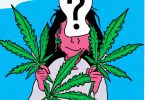How the brain (and body) was built for cannabis
Cannabis has been enjoyed for thousands of years across different cultures for its relaxing effects. And while most people recognize that cannabis contains several different phytochemicals, or plant-derived compounds, they may not know that these chemicals mimic the effects of substances already present within the human body. In fact, the body comes equipped with its very own cannabis system – called the endocannabinoid system.1
The Exos- and Endos- of Cannabis
Phytochemicals, such as THC and CBD, are considered exogenous cannabinoids, where “exo” means ‘outside the body,’whereas anandamide isconsidered an endogenous cannabinoids.2 These compounds are produced naturally and cause similar effects as phytochemicals in the brain and body.
Within the brain, chemicals bind to specialized proteins, called receptors, that help brain cells, or neurons, communicate – altering this chain of signalizing between neurons produces the physiologicaleffects associated withbioactive substances like cannabis. Both exogenous and endogenous cannabinoids bind to cannabinoid receptors 1 and 2 (CB1 and CB2).3 While these two receptors mediate the majority of known effects, there are several others that scientists are currently studying.
The CB1 and CB2 of CBD and THC
CB1 receptors are located in the brain and throughout several organ systems, while CB2 receptors are located in the immune system, as well as the brain.2CB1 and CB2 mediate the effects of phytochemicals differently. While THC strongly binds to the CB1 receptor, CBD does not bind very tightly to CB1 or CB2 – instead, CBD binds to other receptors, such as GPR55, VR1, and
5-HT1A, thus explaining its widespread effects.3This disparity in binding helps explain why CBD and THC produce different behavioral effects.
While THC is known to contribute strongly to the psychoactive effects of cannabis, the actions of CBD are more subtle. And this is directly related to its chemical structure.
CBD Chemistry
Although the structure of CBD has been widely studied, as of 2018, we now have an
FDA-approved CBD therapy for the treatment of severe pediatric epilepsy – this means the highest regulatory body in the US has put its stamp on a formulation of CBD as a safe and effective medicine. The Prescribing Information for this medication, Epidiolex, includes details about its chemical structure and profile, as well as dosing, safety, and how effectively it prevented seizure in clinical trials.
The formulation of CBD in Epidiolex is derived from the Cannabis Sativa L. plant. The medication will reach half its maximum concentration in the blood between 2.5 and 5 hours after consumption, and the body will excrete half of the medication within two to three days. This information gives you an idea of when CBD will reach its maximum effects and when those effects will start to fade – of course, no two CBD formulations are the same.4
It’s important to remember that, in addition to formulation and dose, method of CBD consumption – edibles, vaping, or salves – also greatly impacts the effects. And, of course, since CB1 and 2 receptors are located through the body, not just in the brain, you may find that CBD produces differing time course effects on pain or inflammation than on anxiety.
Still unsure of how your body and brain respond to CBD? Be your own cannabis researcher and do a little trial and error testing to figure out the best method, dose, and formulation of CBD that works best for you!
References
- Crippa, J.A., Guimaraes, F.S., Campos, A.C., Zuardi, A.W., “Translational Investigation of the Therapeutic Potential of Cannabidiol (CBD): Toward a New Age”, Frontiers in Immunology, 2018, Volume 9, pg. 2-16.
- Devinsky, O.,Cilio, M.R., Cross, H., et al. “Cannabidiol: Pharmacology and Potential Therapeutic Role in Epilepsy and Other Neuropsychiatric Disorders”, Epilepsia, 2014,Volume 55, pg. 791-802.
- Zuardi, A.W., “Cannabidiol: From an Inactive Cannabinoid to a Drug with Wide Spectrum of Action”, Braz J Psychiatry, 2008, Volume 30, pg. 271-280.
- Hazekamp, A., “The Trouble with CBD Oil”, Med Cannabis Cannabinoids, 2018, Volume 1, pg. 65-72.










